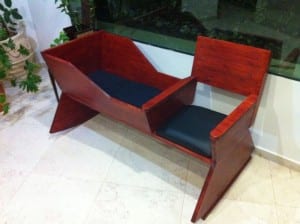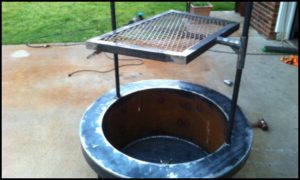Creating a DIY mouse pad is a simple way to add personality and functionality to your workspace. You don’t need advanced crafting skills or expensive materials to design a mouse pad that’s uniquely yours. With a few easy-to-find items, you can build a durable, stylish mouse pad suited to your taste and comfort. This article walks you through a step-by-step guide for crafting your own DIY mouse pad and explores various materials like hard surfaces, leather, and fabric options.
Contents [show]
Step-by-Step Guide to Creating Your DIY Mouse Pad
Creating a DIY mouse pad is a straightforward, enjoyable project that lets you design a personalized accessory for your workspace. The process is quick and doesn’t require specialized skills. You’ll be able to craft a functional, attractive mouse pad using basic materials available at home or your local craft store. Follow this simple step-by-step guide to create your own custom mouse pad.
Materials and Tools You’ll Need
- Base material (cork sheet, craft foam, cardboard, leather, or fabric-covered rubber
- Fabric or decorative paper (optional, for covering)
- Spray adhesive or fabric glue
- Scissors or craft knife
- Ruler or measuring tape
- Pencil or marker
- Clear sealer (optional, for added durability)
Prepare Your Workspace
Establish a flat, clean surface for your crafting space. Cover the work area to keep it safe from cutting or adhesive damage. If using spray adhesives or sealers, ensure excellent ventilation.
Measure and Mark the Base Material
Choose the desired size and form of your DIY mouse pad. Most mouse pads are between 8×8 inches and 10×12 inches. Measure with a ruler and pencil or marker to note the size on your selected base material.
Cut the Base Material
Using scissors or a craft knife, carefully cut out the designated shape. Cut slowly and take your time for smoother edges. Use a craft knife? Put a protecting surface below.

Add Decorative Covering (Optional)
Should you be decorating the mouse pad surface, measure and cut fabric or ornamental paper marginally bigger than the base material. Spray adhesive or fabric glue should be applied to the base in a thin, uniform coating. To avoid bubbles or creases, press the ornamental material flat against the glue.
Trim Excess Edges
Let the glue to totally dry. Then, turn the mouse pad over and gently cut any extra fabric or paper around the edges. This guarantees a tidy, professional conclusion.
Seal and Finish Your Mouse Pad (Optional)
A small coating of clear sealer on the surface will help protect and extend your mouse pad’s life. Use the sealer once it has dried totally.
Test Your DIY Mouse Pad
When your DIY mouse pad is totally dry, set it on your desk and use your mouse to test it. Test comfort and responsiveness; if required, do any last changes.
Benefits of Making a DIY Mouse Pad
Creating your own DIY mouse pad is not just a fun and imaginative project; it also has notable functional benefits. Buying commercial mouse pads usually means compromising on size, material, or design. When you make your own, you control every aspect to fit your office, tastes, and requirements. A DIY mouse pad is a quick, fun approach to show your inventiveness and improve your workstation in many respects.
Customize to Match Your Style
One of the most compelling reasons to create your own DIY mouse pad is the opportunity for personalization. Store-bought mouse pads typically come in limited designs, colors, and patterns, restricting your ability to showcase your personality. By crafting your own, you can choose the exact color, texture, pattern, or even shape that best represents your individual style. You can incorporate images, artwork, or photographs, turning your workspace into a reflection of your interests or passions. This customization transforms an ordinary office accessory into something uniquely yours, adding character to your daily environment.
Cost-Effective and Budget-Friendly
Making a DIY mouse pad is also highly cost-effective. Commercial mouse pads can sometimes be expensive, especially those featuring premium materials or branded designs. Crafting your own mouse pad can significantly reduce costs, especially when using recycled or readily available household materials. Cork sheets, fabric scraps, cardboard, or leftover leather pieces from other projects are ideal for an affordable DIY mouse pad. These materials offer durability without straining your budget, allowing you to save money while still getting a high-quality accessory.
Environmentally Friendly and Sustainable
Creating your DIY mouse pad is an eco-friendly alternative to buying mass-produced products. Many store-bought mouse pads are made using synthetic materials or plastics that aren’t biodegradable, contributing to environmental waste. By using sustainable or recycled materials such as cork, reclaimed fabric, cardboard, or leather scraps, you’re actively reducing waste. This choice benefits the planet while ensuring your workspace remains eco-conscious. It’s a small yet meaningful step toward sustainability, reflecting your commitment to responsible consumer practices.

Tailored for Optimal Comfort
Comfort is another key benefit when making a DIY mouse pad. You have complete control over the size, thickness, and surface texture, ensuring optimal ergonomics tailored specifically to your comfort and productivity. Whether you prefer a softer fabric surface for a smoother mouse glide or a firmer base for precise mouse movements, your DIY pad accommodates your unique preferences. Properly tailored comfort reduces hand strain and wrist fatigue, making extended computer usage more comfortable and productive. By crafting a mouse pad suited exactly to your needs, you’re investing in your daily comfort and long-term wellbeing.
Crafting your DIY mouse pad provides benefits beyond simple functionality, offering personalization, affordability, eco-friendliness, and enhanced comfort, making it a rewarding and practical project for everyone.
Choosing the Right DIY Mouse Pad Material
Choosing the right DIY mouse pad material significantly impacts your workspace experience. Different materials offer varying levels of comfort, functionality, and style, so selecting one that aligns with your needs is essential. The most common materials for DIY mouse pads include hard surfaces, leather, fabric, and thin materials, each providing distinct advantages. Understanding these options helps you create a mouse pad perfectly suited to your personal preferences and workspace requirements.
DIY Hard Mouse Pad
A DIY hard mouse pad typically features sturdy surfaces like plastic sheets, acrylic, wood, or even tempered glass. Hard mouse pads offer a stable and smooth glide, ideal for precision work, gaming, or graphic design tasks. The rigid surface ensures accuracy and consistency in mouse movements, enhancing responsiveness. However, these pads might feel less comfortable during prolonged use because of their firm texture. To ensure maximum comfort, consider pairing your hard mouse pad with ergonomic wrist support. You can customize the hard surface with paint, decals, or vinyl sheets, achieving a unique and professional look.
DIY Leather Mouse Pad
Creating a DIY leather mouse pad offers both sophistication and durability. Leather pads provide a premium feel, blending elegance with practicality. Genuine or synthetic leather surfaces are smooth, allowing your mouse to glide easily, which helps reduce strain during extended use. Leather is naturally resilient, resistant to spills, stains, and everyday wear, ensuring a longer-lasting accessory. If you’re looking for a mouse pad with an upscale aesthetic, leather is an excellent choice. Customize leather pads further by stamping, embossing, or dyeing, achieving personalized style easily.
DIY Fabric Mouse Pad
A DIY fabric mouse pad remains a popular choice due to its versatility and comfort. Fabric mouse pads typically consist of soft textiles such as cotton, denim, or polyester blends, often secured to foam or rubber backing. They provide comfortable cushioning and are gentle on wrists, making them suitable for long hours at your computer. Fabric also offers endless design possibilities, allowing you to select patterns, colors, or images to reflect your style or workspace décor. While fabric pads might require more frequent cleaning, they’re easy to maintain, washable, and refreshable, preserving their appearance and functionality over time.
DIY Thin Mouse Pad
DIY thin mouse pads offer a minimalist, low-profile option perfect for small desks or travel. Thin pads are usually crafted from cork sheets, laminated paper, vinyl, or thin fabric adhered to non-slip rubber. They are portable, lightweight, and easy to store, making them ideal for workspaces with limited space or for on-the-go use. Although thin mouse pads offer minimal cushioning, they provide a reliable, smooth surface for accurate mouse control. They’re also easy to replace or refresh, allowing you to switch up designs regularly without significant expense or effort.
Selecting the right material for your DIY mouse pad ensures your workspace is comfortable, functional, and stylish. Consider your usage patterns, comfort needs, and personal preferences carefully when deciding among hard, leather, fabric, or thin materials.
Tips for Maintaining Your DIY Mouse Pad
Once you have made your DIY mouse pad, good maintenance allows it to perform well and look beautiful. Your mouse pad will last longer with good care, hence maintaining its comfort and responsiveness to your mouse movement. These easy care suggestions will help your bespoke accessory stay in great condition regardless of whether you chose a thin material, cloth, leather, or hard.

Regular Cleaning
Regular cleaning helps your DIY mouse pad remain smooth and responsive by freeing it from dust, dirt, and grime. Gently clean the surface of fabric mouse pads with mild soap, warm water, and a soft cloth; then let it to dry completely before using. Quick cleanups on hard or thin pads composed of acrylic, cork, or plastic are best done with a moist microfiber cloth. To keep the material and preserve smoothness, leather mouse pads should be wiped gently with a somewhat moist cloth and sometimes treated with a leather conditioner.
Avoid Harsh Chemicals
When cleaning your DIY mouse pad, avoid harsh chemical cleaners, solvents, or abrasive cleaning products. Strong chemicals can damage the surface, causing discoloration, deterioration, or loss of texture. Stick with mild soap solutions, gentle detergents, or specialized cleaners designed specifically for materials like leather or wood. A gentle cleaning approach preserves your mouse pad’s integrity, ensuring it lasts longer and continues to perform reliably.
Prevent Exposure to Excessive Moisture
Keep your DIY mouse pad dry to prevent mold, mildew, or warping, especially for fabric and leather materials. Immediately wipe up any spills or moisture to maintain the pad’s durability. If your pad becomes soaked, gently pat it dry with a towel and allow it to air dry completely before further use. Proper moisture management ensures your mouse pad retains its shape and quality over time.
Protect from Direct Sunlight and Heat
Direct sunlight and extreme heat can cause fading, discoloration, or warping of your mouse pad. For leather or fabric pads, prolonged sun exposure can lead to deterioration or loss of flexibility. To protect your mouse pad, keep it out of direct sunlight or intense heat sources, like radiators or heating vents. Regularly repositioning your mouse pad or storing it away from sunlight helps maintain its vibrant appearance and material quality.
Regularly Inspect for Wear and Tear
Periodically inspect your DIY mouse pad for signs of wear, such as frayed edges, peeling surfaces, or loss of traction. Minor damage can often be repaired quickly using fabric glue or adhesive. Catching small issues early and addressing them promptly helps prevent larger damage. Regular inspection and quick repairs prolong the life of your mouse pad, keeping it comfortable and visually appealing.
Consistent care and attention to these simple maintenance practices will ensure your DIY mouse pad stays functional, comfortable, and attractive for years to come.
Conclusion
Creating your own DIY mouse pad is an easy, rewarding project that lets you personalize your workspace and enhance your comfort. By choosing the right material, following simple crafting steps, and maintaining your mouse pad properly, you’ll enjoy a customized accessory tailored precisely to your needs. Whether you’re after style, comfort, or functionality, DIY mouse pads offer an eco-friendly, budget-friendly alternative to store-bought options. Start crafting today and experience the satisfaction of designing a workspace accessory uniquely your own.
For more productive projects to your home office, check out our DIY laptop stand project next!
























